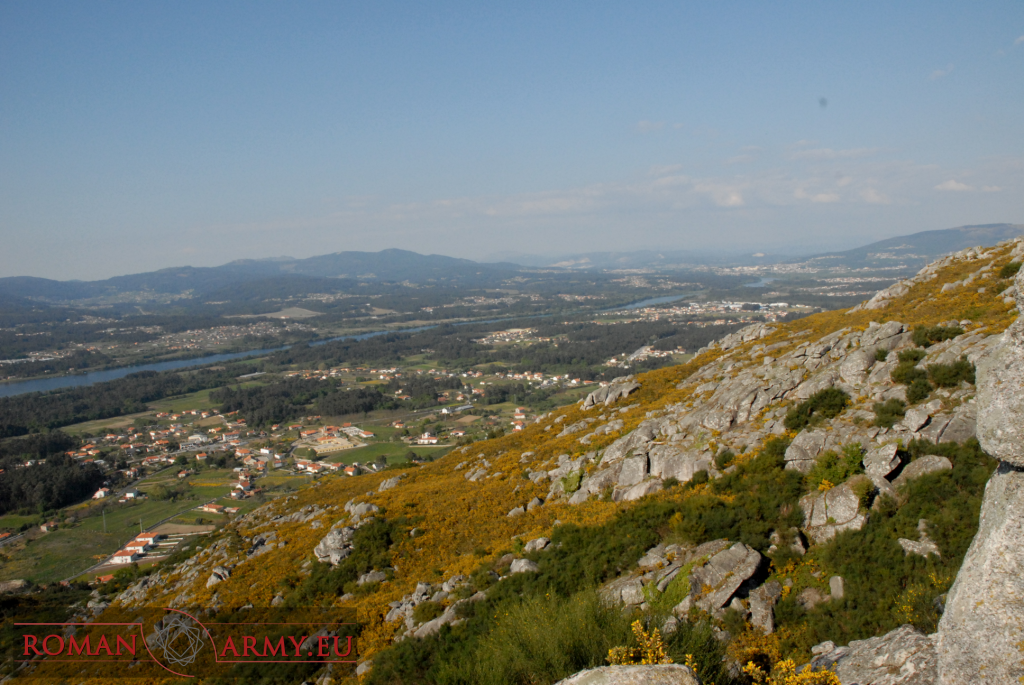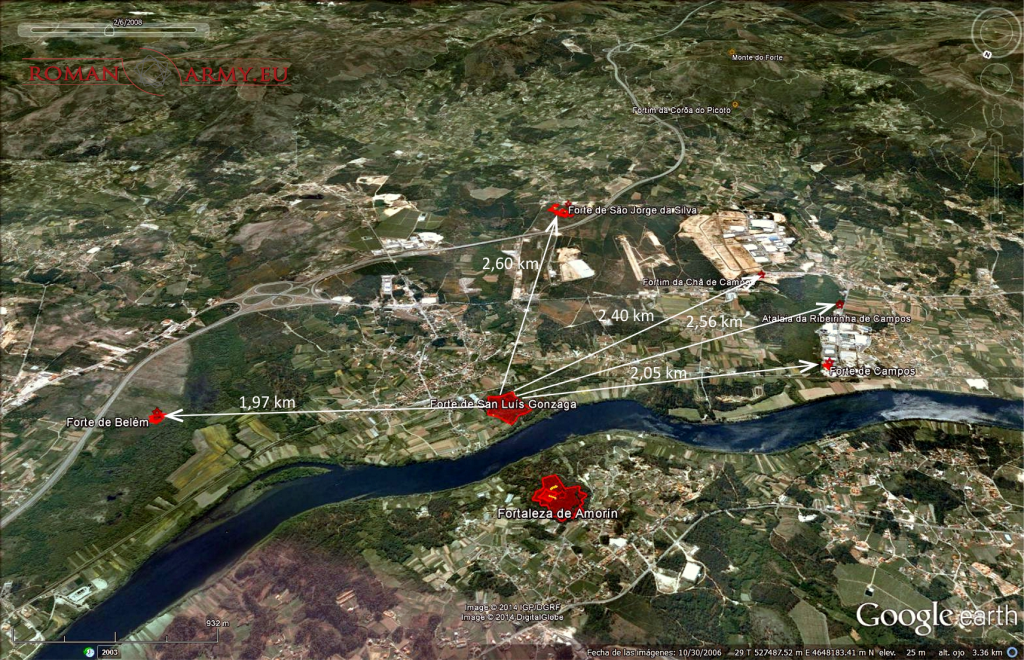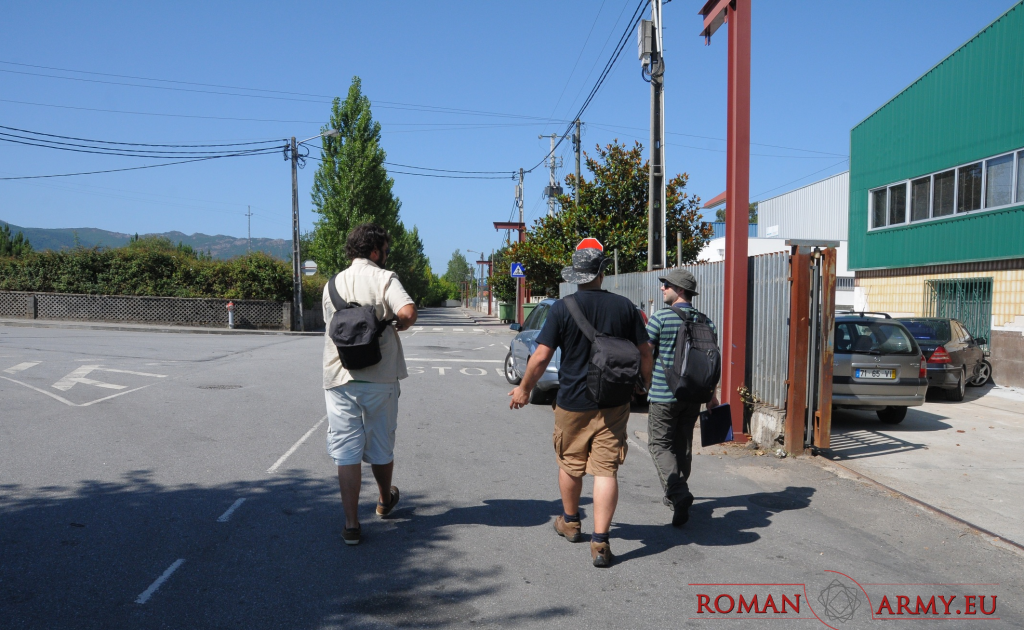
Campos is situated on the outskirts of São Pedro da Torre (Valença, Portugal), on the banks of the Minho River. Here, the Galicians built a star-shaped fortification, the fort of San Luís Gonzaga, during the Portuguese Restoration War (1640-1668). In order to cut the advance of these troops on Portuguese lands the Portuguese elaborated a strategy. As the chronicles narrate, they built a series of watchtowers and fortresses, equidistant from the fort’s by a cannon shot.

Although we tried to check on the field the existence of archaeological remains related to this historic context, the area was already razed by the construction of an industrial park back in the 1980s. We used Google Earth satellite images and, above all, historical aerial photographs of Portugal (RAF 1947, SPLAL 1949 and USAF 1958 flights) to analyse this area. It was then identified a large quadrangular structure with rounded corners. Inside, we also found the remains of another structure that it could correspond with a Early Modern Age fortification.

After a morphological study of the larger enclosure we concluded that it was a Roman camp reoccupied during the Portuguese Restoration War. By using photogrammetric techniques we appreciated the existence of an inner extensive flattened area, an artificial elevation corresponding with the remains of the rampart of the camp and a depression that was interpreted as a single ditch. In addition, the location are suitable for the establishment of a Roman military settlement: it is a piece of land with a soft slope, with good visibility over the surroundings and flanked by the river Minho and the Ribeira de Campos. Although we do not known the full extent of the enclosure, no doubt it was a site of remarkable dimensions that could host an important military detachment.
The discovery of Campos implies the first positive identification of some castra aestiua in northern Portugal. Moreover, it is the second Roman military site attested in the western area of ancient Gallaecia after O Cornado (A Coruña). This allows us to recover old historical issues in relation to the scope and purpose of the Roman military presence in the region in relation with the process of integration of this area in the Roman world.
However, it is still possible that Campos retains a small intact area. The study of these remains with the proper archaeological techniques could enhance our knowledge and state a dating for these castra aestiua. We just need to find this tiny needle in the industrial park!